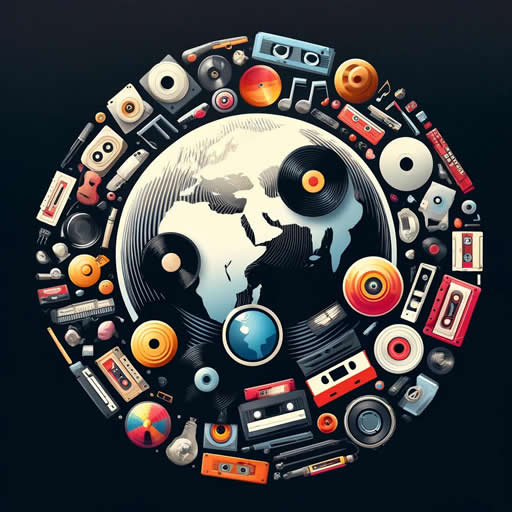The Impact of Ska on Punk Rock
Punk rock’s rebellious spirit and anti-establishment ethos have made it a hallmark of youthful defiance for decades. However, what is often overlooked is the deep influence of ska music on the early development of punk. The fusion of punk’s raw energy with ska’s upbeat, rhythmic foundations was not just a passing trend; it became a cornerstone in the evolution of punk rock.
A Brief History of Ska Music
Ska originated in Jamaica in the 1950s, blending traditional Jamaican folk music with American jazz and rhythm and blues. This unique style was characterized by fast-paced rhythms, syncopated guitar, and prominent horn sections. Ska’s lively, infectious energy made it popular across the island and laid the groundwork for future genres like reggae and rocksteady.
While ska’s popularity in Jamaica waned during the 1960s, it found new life in the UK, where it influenced a new wave of artists. Bands like The Specials and Madness, along with the rise of 2 Tone Records, revitalized ska with a fresh sound that blended punk’s aggressive edge with ska’s bouncy rhythms. This revival brought ska into the punk scene and gave it lasting influence over British and global music.
The Influence of Ska on Punk Rock
The impact of ska on punk rock can be seen most clearly in the music of iconic bands like The Clash. The Clash are often credited with popularizing ska-punk, a subgenre that fuses ska’s upbeat rhythms with punk’s raw energy. Their landmark 1979 album London Calling marked a significant shift, incorporating elements of reggae, ska, and soul into the punk genre.
With their 1980 album Sandinista!, The Clash further explored the possibilities of ska-punk, blending genres in innovative ways. Songs like “The Magnificent Seven” and “Police on My Back” showcased this hybrid sound, pushing punk into new musical territory. Their work demonstrated that punk could be more than just fast, angry music—it could also be rhythmically diverse and socially conscious.
The Evolution and Impact of Ska-Punk
As ska-punk evolved, it attracted a wide variety of artists who appreciated its high-energy, danceable rhythms and the space it allowed for experimentation. Bands like The Specials and Madness helped to mainstream the genre, making ska-punk a central part of the UK’s punk scene in the late 1970s and early 1980s.
The genre’s reach expanded beyond the UK, influencing a broad spectrum of music. Ska-punk’s energetic rhythms and catchy melodies found their way into pop-punk, while its socially conscious lyrics resonated with the emerging emo movement. Ska’s influence can even be heard in modern genres like dance-rock and indie rock, where its infectious energy continues to inspire new artists.
Notable Examples of Ska-Punk’s Influence
- No Doubt: The band fused ska with punk and pop to create a unique sound that achieved mainstream success, especially with their 1995 album Tragic Kingdom.
- The Offspring: Known for blending punk rock with ska elements, their energetic sound became synonymous with 1990s punk.
- Rancid: This band pushed the boundaries of ska-punk by incorporating reggae, hip-hop, and traditional punk into their sound, particularly on their classic album …And Out Come the Wolves.
- Sublime: Their eclectic mix of ska-punk, reggae, and rock created a distinct sound that gained widespread popularity, with songs like “Santeria” and “What I Got” becoming modern classics.
The Legacy of Ska-Punk
Ska-punk’s evolution into a distinct genre can be attributed to its versatility and adaptability. Since its origins in the 1970s, it has continued to inspire new generations of musicians and listeners. The genre’s ability to merge the high energy of punk with the danceable rhythms of ska made it an appealing option for bands looking to stand out in the punk scene.
Ska-punk’s legacy is evident in the continued success of bands like The Clash, No Doubt, and Rancid, whose groundbreaking music remains influential today. Additionally, its influence can be felt in contemporary genres like dance-rock and indie rock, where ska’s bouncy, upbeat style continues to make an impact on modern music production.
The Role of Ska-Punk in Modern Music
In modern music, the influence of ska-punk is more prevalent than ever before. The genre’s upbeat rhythms and catchy horn sections have found their way into the rising indie rock and dance-rock movements, bringing a sense of fun and energy to these styles. Ska-punk continues to be a creative force, providing a template for bands to experiment with their sound while staying true to punk’s rebellious roots.
Beyond rock and punk, ska-punk’s energetic spirit has also left its mark on emo, pop-punk, and alternative music. Bands like Reel Big Fish and Less Than Jake continue to incorporate ska elements into their music, keeping the genre alive and well. This cross-genre influence has allowed ska-punk to stay relevant and dynamic, continuously inspiring new waves of musicians and audiences.
Conclusion
The impact of ska on punk rock is both profound and far-reaching. Emerging from the vibrant musical landscape of the Caribbean, ska played an integral role in shaping the early sound of punk rock, especially through the creation of ska-punk. Its rhythmic vitality, catchy melodies, and ability to blend with other genres helped push punk rock beyond its initial boundaries, inspiring innovation and creativity within the scene.
From The Clash‘s groundbreaking albums to modern incarnations of ska-punk in genres like indie rock and dance-rock, ska’s influence on punk has proven to be long-lasting and transformative. Whether you’re a die-hard fan of ska-punk or just a casual listener, the enduring impact of ska on punk rock continues to resonate, proving that this genre fusion is here to stay.
